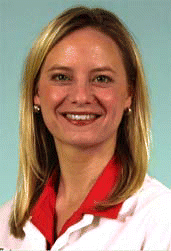If there is evidence of development of a thickened scar, steroid injection is used to decrease fibroblast proliferation; fibroblasts create the collagen needed for strength in the wound, she noted. When this proliferation continues uncontrollably, a hypertrophic or keloid scar forms. If the patient responds to the steroid, these injections can be repeated monthly for a total of three to four months. Response should be reassessed with each injection, and the scar should be massaged following each injection to break up cellular bonds in the matrix.
Explore This Issue
February 2008Keep the incision clean to promote healing. Infection leads to prolonged healing, and longer healing times lead to an unfavorable scar, she stated.
Reconstructive Surgery
Exquisite surgical technique is the most important consideration to avoid scars, regardless of the type of surgery, said Neal Futran, MD, DMD, Professor of Otolaryngology-Head and Neck Surgery, Plastic and Reconstructive Surgery, and Neurological Surgery and Director of Head and Neck Surgery at the University of Washington School of Medicine in Seattle.
Mark Wax, MD, Professor and Program Director for Otolaryngology and Head and Neck Surgery at Oregon Health Sciences University in Portland, agreed with Dr. Futran that surgical technique is the most important factor in minimizing scarring. Be sure to put the skin together with the least amount of tension on the incision, Dr. Wax said.
Patients should be advised on proper nutrition and adequate hydration before surgery, continuing on this regimen after surgery. When head and neck reconstruction is performed as part of cancer management, nutritional status is especially important, Dr. Wax said.
Always ask patients about supplements and herbal products they are taking, because some of these products may increase bleeding, Dr. Wax said. In addition, patients with comorbidities may be on medications that alter blood parameters. For example, patients with arthritis who are taking aspirin or NSAIDs need to stop these drugs prior to surgery. Patients with diabetes and hypertension should have blood sugar and blood pressure, respectively, well controlled prior to surgery, and these patients should remain on their drug regimens. Electrolytes should be checked prior to surgery to make sure they are normal, Dr. Wax said.
Despite the availability of several new types of gels and materials, Dr. Futran typically uses postoperative oral antibiotics for five days, along with topical antibiotic ointment for the first 48 hours, to avoid infection. He prefers a broad-spectrum oral antibiotic such as augmentin or clindamycin, and he uses double antibiotic ointment. The wound dressing should not be occlusive, so as not to create a friendly environment for infectious organisms.

Leave a Reply